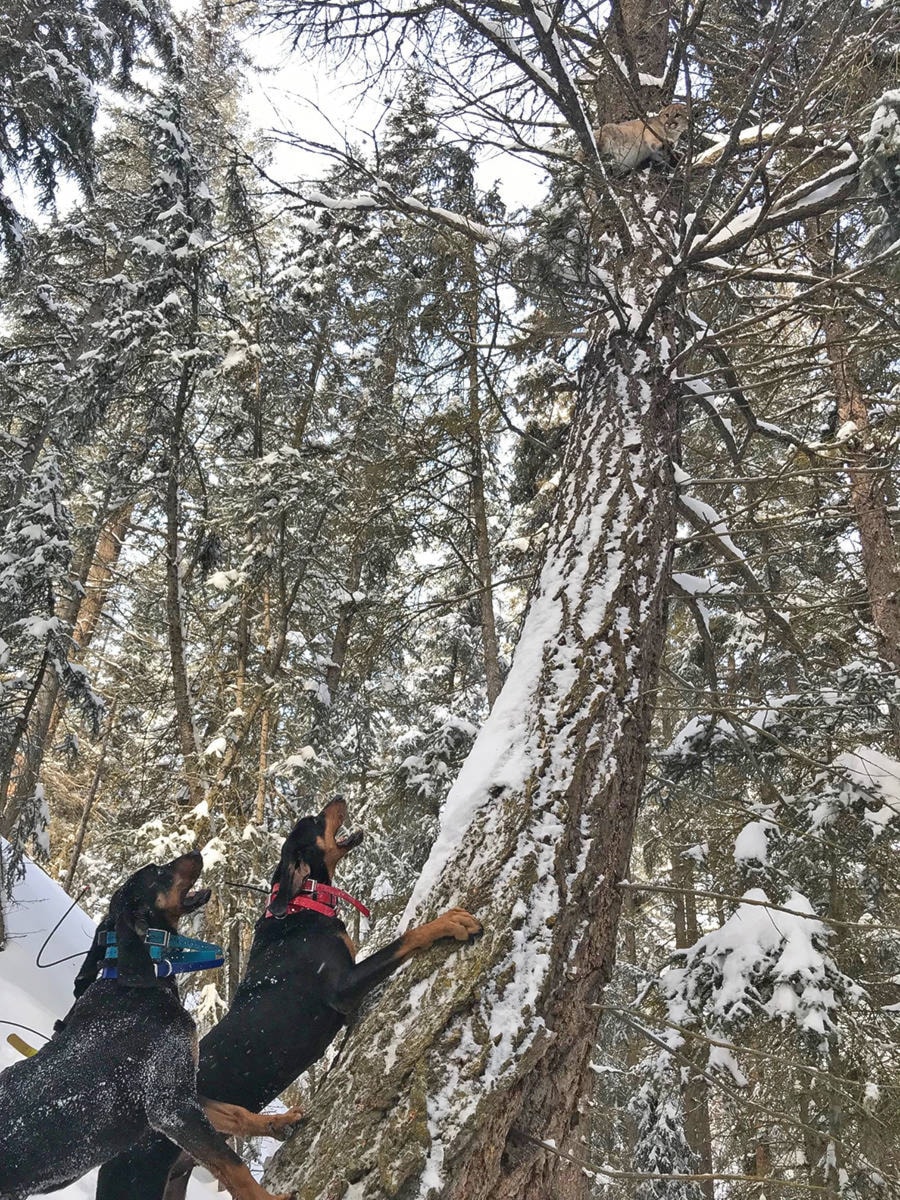Local hound hunters are participating in a multi-year project to estimate cougar populations in the Chilcotin.
Shane White, a wildlife biologist with the Ministry of Forests, Lands, Natural Resource Operations and Rural Development, said the project focuses on areas in Wildlife Management Unit 5-14, just west of the Fraser River.
“It’s important that we better understand cougar populations in our region, to ensure the conservation and sustainable management of this species,” White said.
“I think that it’s great that we can work with and incorporate local knowledgeable hound hunters in this study, utilizing a citizen science approach for obtaining reliable data to help inform cougar management in our region.”
White also thinks people will find the approach to getting at a reliable cougar population estimate interesting.
“It is a relatively non-invasive and a cost effective approach with no direct handling of cougars involved,” he said.
The field season began in mid-January 2019 and ended in March 2019, overlapping a portion of the cougar hunting season in the region.
Participating hound hunters supplied project equipment, maps of the study area, field data sheets and small paper bags for sample storage.
White said each hunter was assigned a specific area to survey to ensure uniformity across the study area.
“Once a fresh cougar track was encountered, the animal was to be pursued with hounds and treed and subsequently shot in the rump with a CO2 charged small biopsy dart to obtain a sliver of tissue and subsequently the unique DNA fingerprint for that individual cougar,” he explained noting permits to allow sample collection were obtained from Front Counter BC prior to field work.
Read more: That’s no kitty cat: Victoria firefighters help catch cougar chased up a tree
Individual cougars are then marked in the study with a DNA profile on record.
Over time, a population estimate for cougars in this study area can be modelled based on the “mark-recapture” data obtained.
If a cougar was legally harvested in the study area, tissue samples from these harvested animals will also be acquired during compulsory inspections, so those particular cougars can be screened out of the analysis.
White said year one was challenging with generally poor snow conditions early on in season which made it difficult finding fresh cougar tracks and only a limited number of hound hunters were available for the field work.
If there is interest among other hound hunters in the region to learn more about this project and potentially becoming involved, White welcomes inquiries.
“While hound hunters currently involved in this project are volunteering their time, there is a daily $100 fuel reimbursement for volunteer hound hunters who use their own vehicle during our sampling sessions,” he added.
As it is a multi-year project, a population estimate for cougars will not be obtained until an adequate number of samples are collected over the next year or two.
“It’s early days, but I’m hopeful next year we will be very successful in getting plenty of samples,” White said.
Read more: Cougar kitten rescued near Williams Lake
news@wltribune.com
Like us on Facebook and follow us on Twitter
